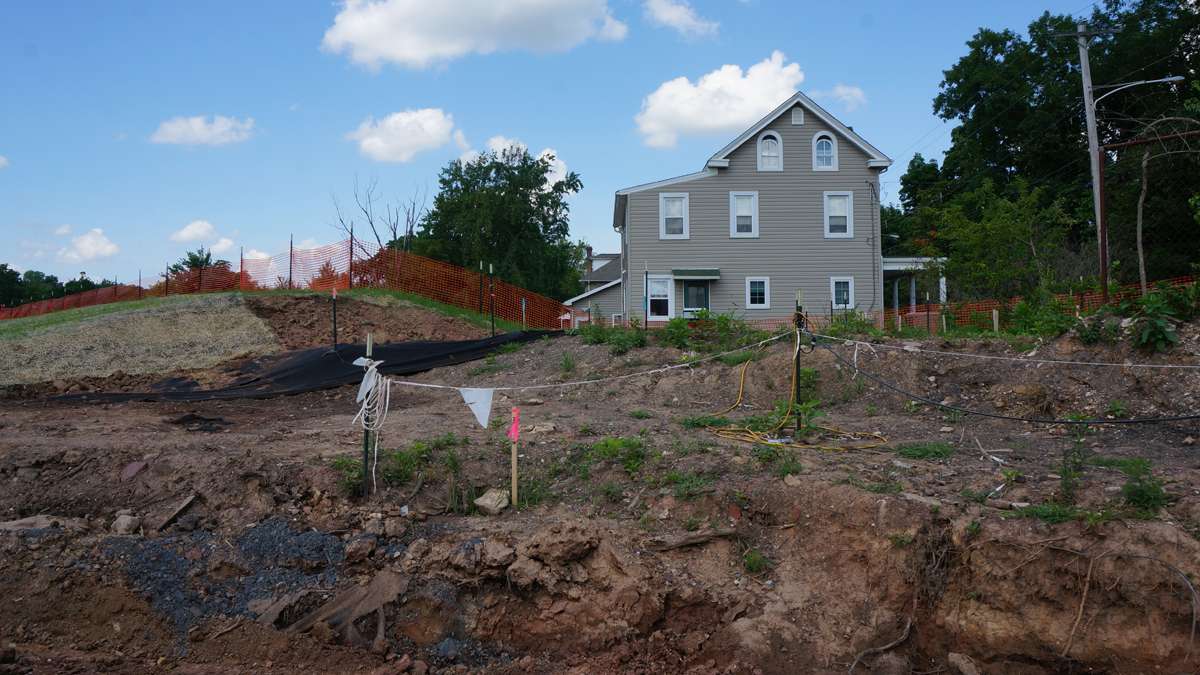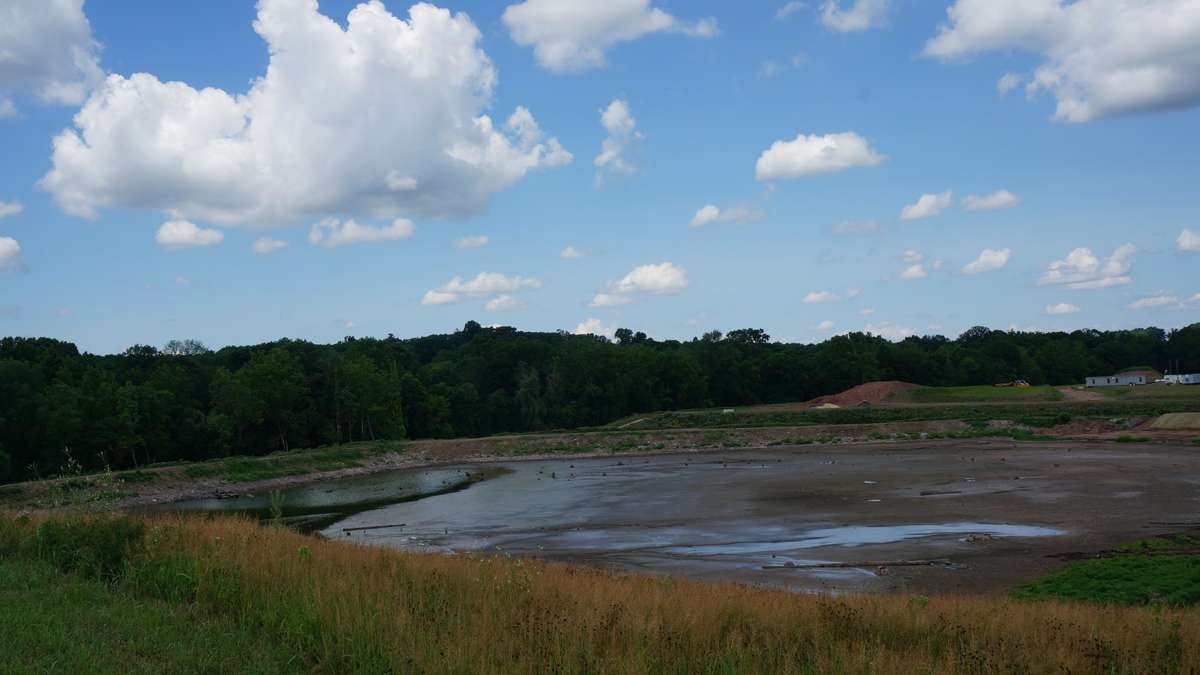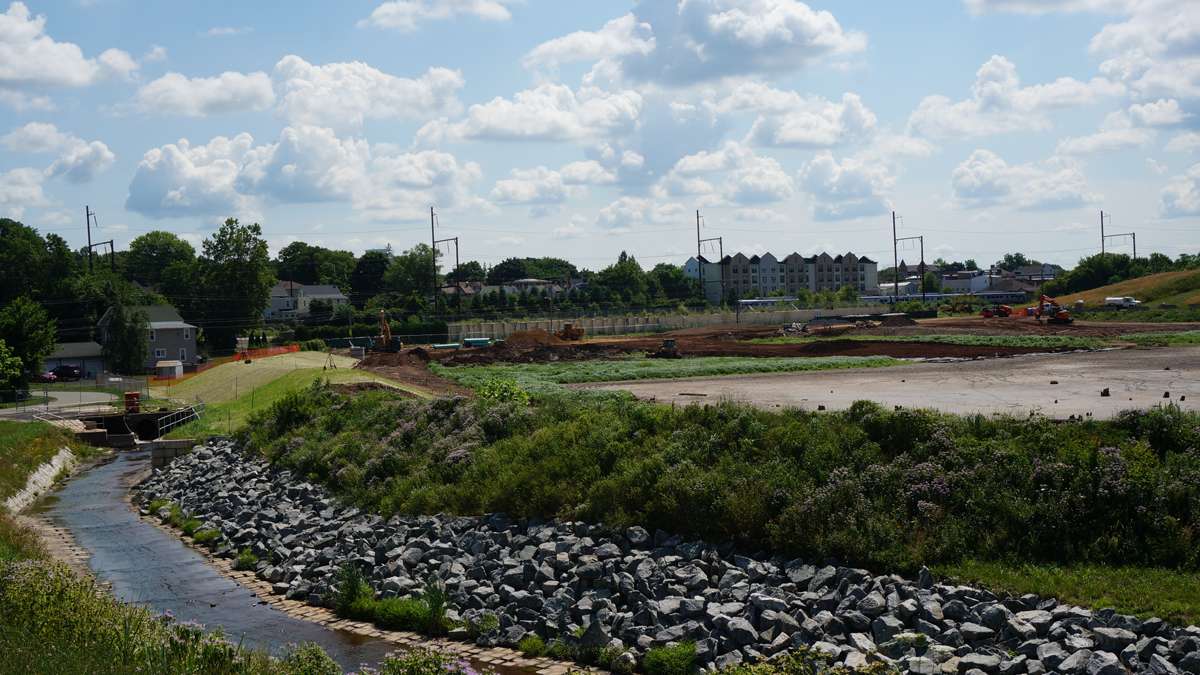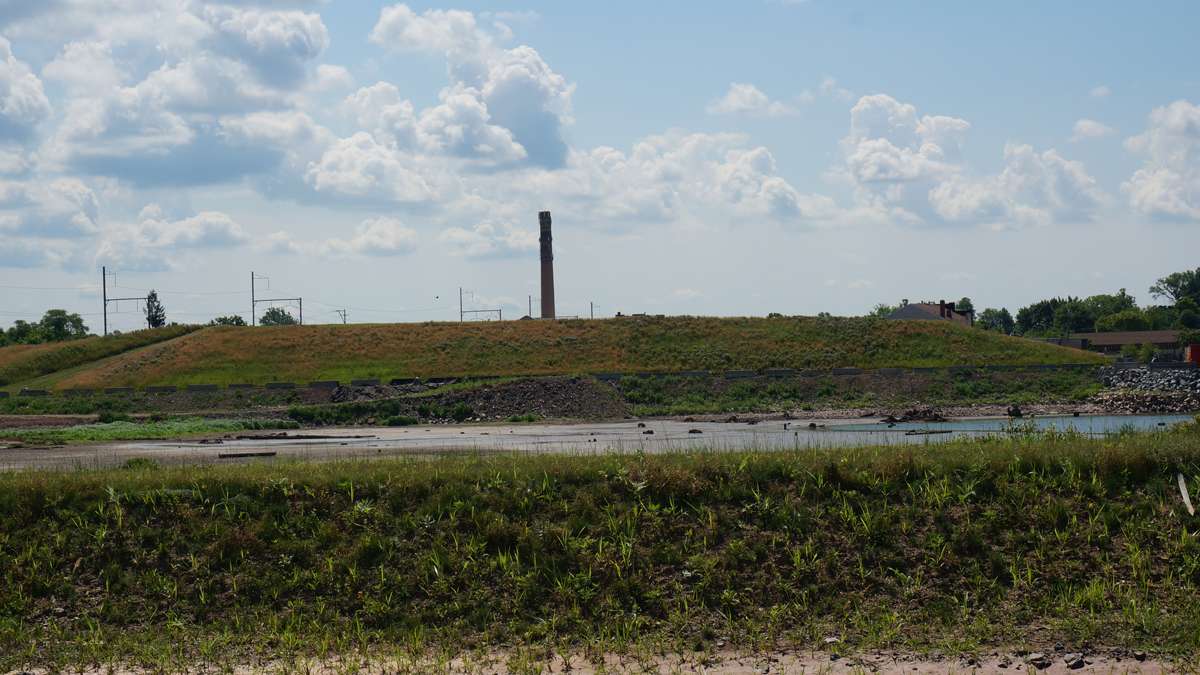Asbestos cleanup in Ambler nears completion [photos]
Listen-

-

-

-

-

-

-

The BoRit Superfund site in Ambler, Pennsylvania, is nearing completion. (Jessica McDonald/WHYY, file)
-

-

-

-

-

Although the asbestos factories closed decades ago, the suburban town of Ambler, Pennsylvania, is still home to lots of toxic waste.
After years of work, the U.S. Environmental Protection Agency is now nearing its completion of the first phase of cleanup for its remaining Superfund site, known as BoRit. But for some in the Montgomery County community, questions linger about whether the fix is sufficient.
A green solutionSome 20 miles north of Center City, Philadelphia, the BoRit site no longer looks like the dump it once was. In some corners, it even seems bucolic.
“We’ve tried to do a green solution here, and as you can see vegetation is taking very well, there’s a mixture of wildflowers and many different things,” said Eduardo Rovira, the EPA’s on-scene coordinator at the site.
When Rovira arrived here six years ago, asbestos waste was just under the surface. Crumbling remnants of asbestos tiles and shingles dotted nearby creek beds and the banks of a reservoir. And not far from a McDonald’s sat a 2-acre, 25-foot-high pile of waste.
“The consistency of the pile was like a cream cheese, toothpaste consistency,” recalled Rovira.
That pile has been transformed into a grassy hill. Workers layered 2 feet of soil over special materials to make sure the asbestos waste cannot get out. The creek beds were also widened and lined with rocks to curb flooding and erosion.
The grasses and wildflowers have a special purpose here, too.
“The root system of the vegetation helps keep everything kind of locked,” explained Rovira.
The primary task remaining is draining the reservoir. As of this summer, Rovira says they’ve pumped out more than 28 million gallons of water, filtering each drop for asbestos before releasing it into the bordering Wissahickon Creek. When they’re finished, they plan to fill it back up and return this land to the Ambler community.
An industrious Philadelphia pharmacistThe tale of how Ambler ended up with more than 1.5 million cubic yards of asbestos waste begins with a pharmacist from Philadelphia named Dr. Richard Mattison.
In the late 1800s, he formed a company with businessman Henry Keasbey and moved to Ambler. In his experiments, he had learned asbestos, which is a naturally occurring mineral, was a great insulator and hardy construction material.
Keasbey & Mattison soon set up factories and made Ambler a company town that thrived on asbestos manufacturing. Over the next half century, asbestos was added not only to building materials such as shingles, siding, and floor tiles, but also automobile brakes, electrical cords, and cement pipes.
The material was even spun into yarn and made into fabrics used as fire-resistant curtains for opera houses, and improbably, underwear.
The ‘White Mountains’ of AmblerBusiness boomed, and Ambler flourished. But with more and more production, the waste piles grew.
“We used to come down here and ride the ‘White Mountains,’ slide on cardboard boxes, and stuff like that, not knowing it was dangerous,” said Flo Wise. She was just 7 years old when she coasted down the waste piles and romped on a nearby playground.
By the 1970s, it had become undeniable that the magically strong, fire-resistant mineral was also a health hazard. When breathed in, asbestos fibers can lodge in the lungs, leading to the potentially fatal disease asbestosis. Exposure can also increase the risk of lung cancer and a rare cancer of the chest cavity called mesothelioma.
“We do know there’s more mesothelioma in the Ambler ZIP code than there is compared to what we’d expect looking at statewide rates,” said Lora Siegmann Werner of the Agency for Toxic Substances and Disease Registry.
Between 1992 and 2008, the cancer registry logged 28 cases in the Ambler ZIP code — more than three times the expected number. Because of the long latency of the disease, even though Ambler has long ceased asbestos manufacturing, historical exposure still concerns health officials today.
“We’re going to keep on seeing more of these cases,” said Siegmann Werner.
Cleaning upIn the 1980s, the EPA stepped in to clean up the worst of the waste piles. By 1996, those areas were deleted from the Superfund priority list. But that didn’t mean the waste was gone.
Sharon McCormick, an Ambler Borough council member, can easily point to bits of asbestos waste in a ditch just off a road near the first waste pile the EPA covered more than 20 years ago. Apartments and houses are nearby.
“You can take a walk up here and you can see it — being pulled out in spots — because this is a dump,” she said. “People live here, every day.”
McCormick has been researching asbestos in Ambler for a decade, and she helped found two area groups, Citizens for a Better Ambler and the BoRit site’s Community Advisory Group (CAG), to deal with asbestos issues.
Instead of doing more covering, she says, the EPA should remove the asbestos. But she knows her wish is a long shot.
Ruth Wuenschel, the EPA’s community involvement coordinator for the BoRit site, says the Army Corps of Engineers estimated it would take about 12 years of constant trucking to do so.
“If you’re digging up soil and moving it that much, ultimately that would create more of a hazard than covering it because it has the potential to become airborne,” she said. “So, really, covering it is a better option.”
Future reuseSome talk of turning the BoRit site, which sits partially in the neighboring townships of Whitpain and Upper Dublin, back into a park once the EPA finishes with it.
Ruthie Weeks remembers the swing sets and ball fields at the Whitpain Park that used to be a centerpiece of life in her community. It was part of their identity.
“What we did have in a blurp of a piece of time, it’s gone,” she said. With careful monitoring, she’s in favor of a park returning.
McCormick agrees the community needs play spaces, but doesn’t think it should be on top of asbestos.
“You can make it look pretty, but at the end of the day, it’s toxic waste,” she said.
Diane Morgan, another member of the CAG, is also concerned about safety.
“You can’t guarantee the fact that the animals aren’t going to burrow up,” she said. “I think it’s an absolutely terrible idea.”
One hope is that research can provide more clarity. The University of Pennsylvania recently received a $10 million grant to investigate six asbestos-related research questions relevant to the people of Ambler and the surrounding communities. They include identifying susceptibility genes, developing a blood test that could detect early-stage disease, and using a fungus that could break down asbestos fibers into a non-toxic form.
WHYY is your source for fact-based, in-depth journalism and information. As a nonprofit organization, we rely on financial support from readers like you. Please give today.

